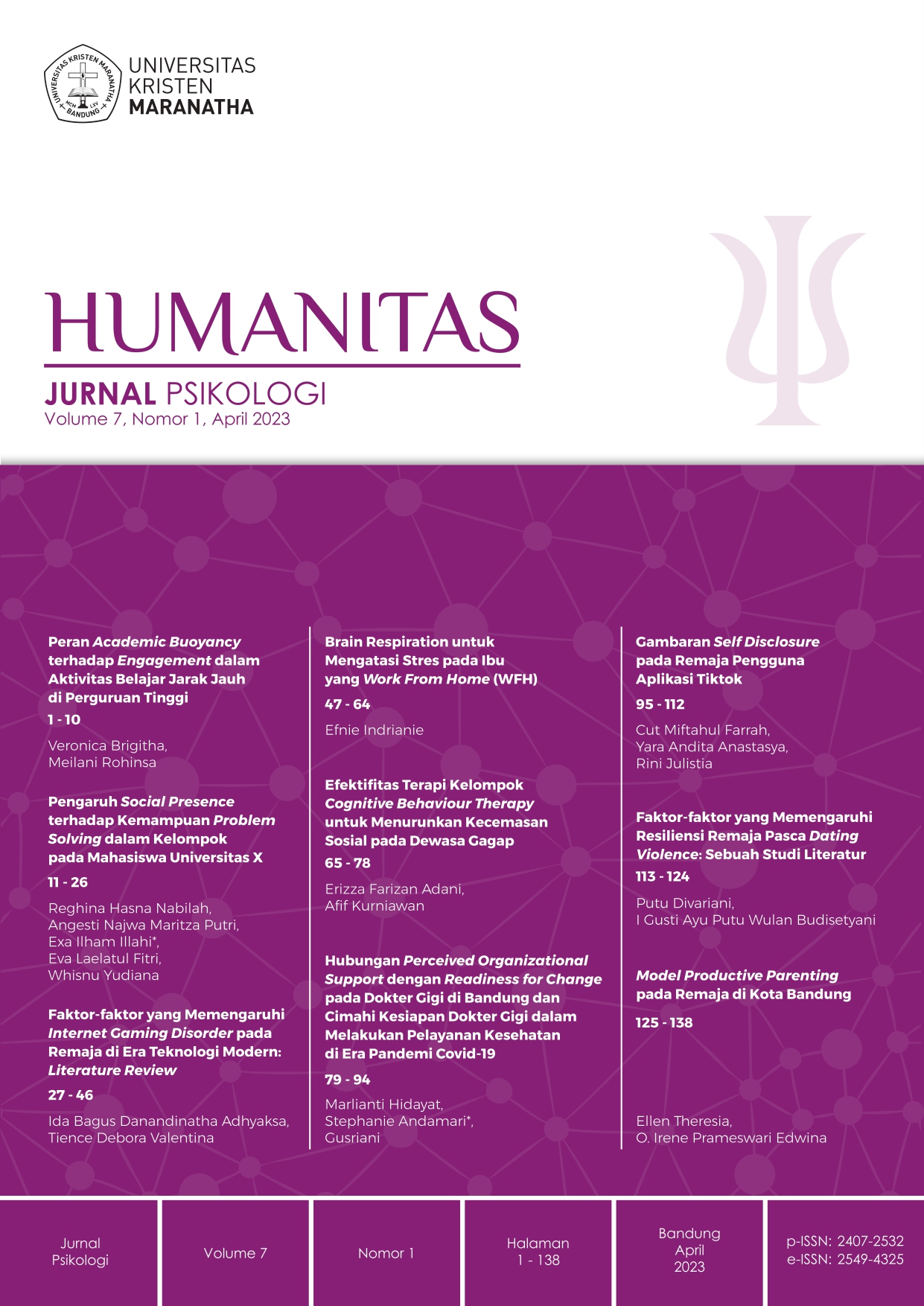Pengaruh Social Presence terhadap Kemampuan Problem Solving dalam Kelompok pada Mahasiswa Universitas X
Isi Artikel Utama
Abstrak
Unduhan
Rincian Artikel

Artikel ini berlisensi Creative Commons Attribution-NonCommercial 4.0 International License.
Referensi
Abdullah, M. H. (2004). Social presence in online conferences: What makes people ‘real’. Malaysian Journal of Distance Education, 6(2), 1-22.
Adedoyin, O. B., & Soykan, E. (2020). Covid-19 pandemic and online learning: The challenges and opportunities. Interactive Learning Environments, 1–13. https://doi.org/10.1080/10494820.2020.1813180
Al-Samarraie, H. (2019). A scoping review of videoconferencing systems in higher education. The International Review of Research in Open and Distributed Learning, 20(3). https://doi.org/10.19173/irrodl.v20i4.4037
Asrin, A. (2022). Metode penelitian eksperimen. Jurnal Maqasiduna: Ilmu Humaniora, Pendidikan & Ilmu Sosial, 2(1).
Balogova, K., & Brumby, D. (2022). How do you zoom?: A survey study of how users configure video-conference tools for online meetings. 2022 Symposium on Human-Computer Interaction for Work. https://doi.org/10.1145/3533406.3533408
Bariyyah, K. (2021). Problem solving skills: Esssential skills challenges for the 21st century graduates. Jurnal Educatio: Jurnal Pendidikan Indonesia, 7(1), 71. https://doi.org/10.29210/120212843
Bhadargade, S. L., Mallibhat, K., & Joshi, G. (2020). A study of factors influencing the Problem-Solving skills of engineering students. Journal of Engineering Education Transformations, 33(4), 7–15. https://doi.org/10.16920/jeet/2020/v33i4/143655
Birdwhistell, R. L. (2010). Kinesics and context: Essays on body motion communication. University of Pennsylvania press.
Byrnes, M. M., & Spitz, H. H. (1979). Developmental progression of performance on the Tower of Hanoi problem. Bulletin of the Psychonomic Society, 14(5), 379–381. https://doi.org/10.3758/bf03329485
Castelli, F. R., & Sarvary, M. A. (2021). Why students do not turn on their video cameras during online classes and an equitable and inclusive plan to encourage them to do so. Ecology and Evolution, 11(8), 3565–3576. https://doi.org/10.1002/ece3.7123

